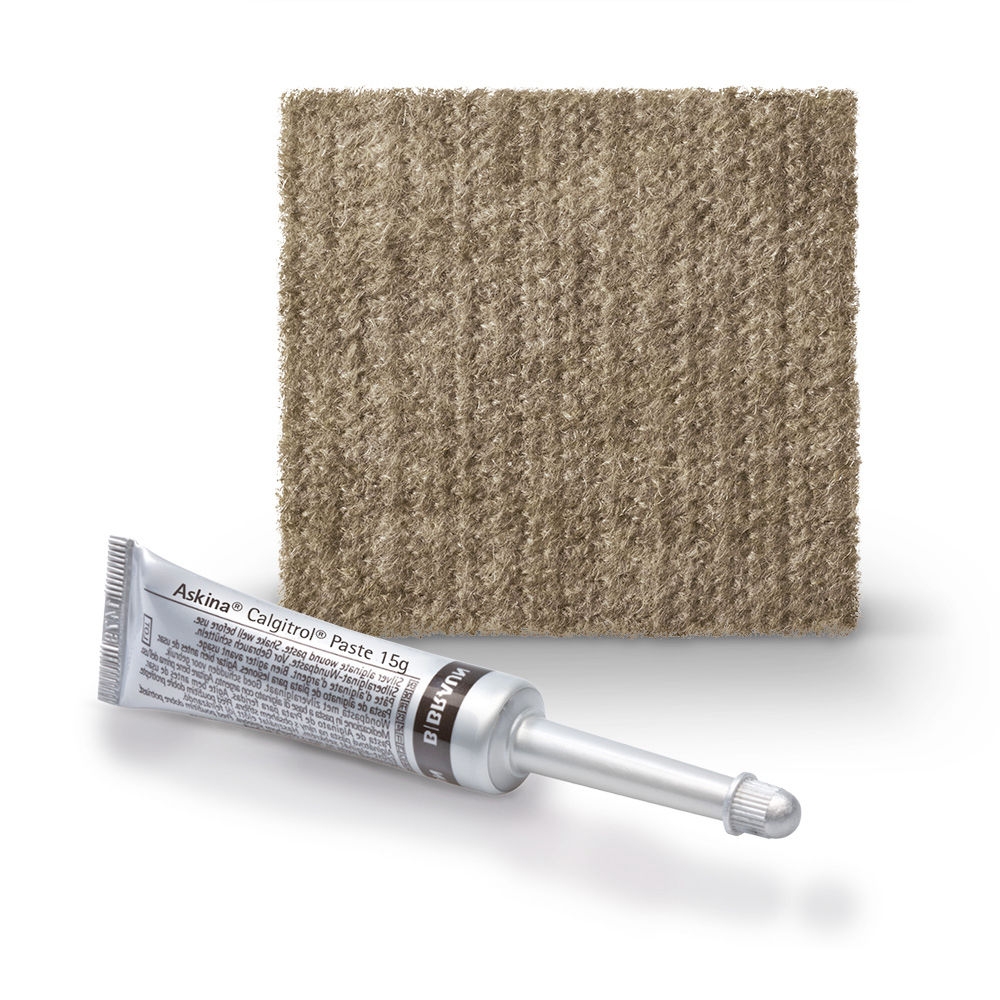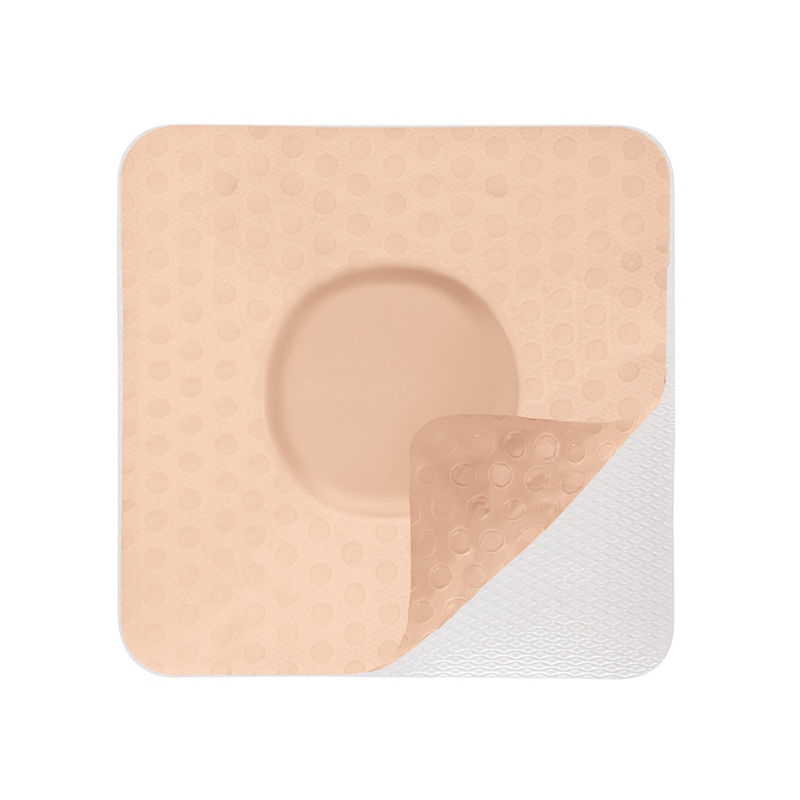No content results match your keyword.
Content
You have successfully logged out.
Not registered yet?
No content results match your keyword.
Content
No product results match your keyword.
Products
Help prevent and treat diabetic foot ulcers
Diabetic foot syndrome (DFS) is a common complication of diabetes mellitus that affects every fourth patient with diabetes at some point in their life.[1] The risk of developing DFS increases with time.
One consequence of DFS is an ultimate skin breakdown or foot ulceration, which includes all changes in the foot as a result of diabetic polyneuropathy as well as diabetic micro- and macroangiopathic changes.
Patients may also develop Charcot foot, which is another manifestation of DFS. Charcot foot is a deformation characterized by a deterioration in the bone metabolism due to diabetes, which results in fractures of the bones, joint dislocations, fusion of bone fragments, and other complex deformations of the foot. Another name for Charcot foot is diabetic osteoarthropathy.
Diabetic Charcot foot may develop without a foot ulcer, but it is often associated with diabetic foot ulcers. The deformities lead to pressure ulcers because of standing or walking, or simply when patients wear shoes that are not designed for their specific foot anatomy[1,2] .
Diabetes can affect the peripheral nervous system in many ways. Patients often experience numbness, tingling, pain, and/or weakness that start in the feet and increase the risk of foot ulcers. This is caused by tight shoes, abrasive socks, or unnoticed microtrauma to the skin. Moreover, the skin’s resistance to trauma may be impaired because the function of skin appendages, including hair follicles and sebaceous glands, is altered in diabetic neuropathy.[3,4]
Another risk factor that contributes to DFS is diabetic angiopathy. Larger arteries stiffen due to fibrosis, media enlargement, calcification and multiple other processes (macroangiopathy). But also small vessels, especially the inner layer of capillaries are affected by diabetes comprising their function (microangiopathy). Both can critically contribute to DFS.[1,5,6,7]
Skin integrity of the foot

No open lesion; patient may have severely deformed foot.
Maintain skin integrity

The formulation of Linovera® Emulsion, based on hyperoxigenated fatty acids, helps increase the skin resistance against the agents that cause the diabetic foot ulcers maintaining the appropriate skin moisture levels.
A top priority in treating the diabetic foot syndrome is to avoid amputation.[8] Because currently, the majority of all foot and lower leg amputations are performed on patients with diabetes mellitus. It is estimated that amputations occur 40 times more frequent in patients affected by diabetes compared to non-diabetic patients.[12]
Depending on the extent of the tissue damage, diabetic foot ulcers can be categorized into five grades, with every grade requiring its specific treatment.[10,11,12]

Superficial ulcer involving the full skin thickness but not underlying tissues
Keep the wound bed clean for granulation tissue to form
Prontosan® Wound Irrigation Solution is indicated for cleansing, moistening and decontamination of acute and chronic wounds.
The use of Prontosan® Wound Gel X can provide long-lasting cleansing and decontamination of the wound bed between dressing changes.
Prontosan® Debridement Pad has been designed to support the wound bed preparation when used in conjunction with Prontosan® Wound Irrigation Solution.


Askina® Calgitrol® offers a broad antimicrobial effectiveness.
Askina® Calgitrol® Ag+ is a wound dressing that combines antimicrobial silver with strengthening cellulose fiber to manage wound infection and high exudate.
Askina® Calgitrol® Paste is a dressing with an ionic silver alginate matrix in a paste form.
Askina® DresSil Border is a self adherent foam dressing with soft silicone adhesive on one side and a vapor permeable waterproof film on the other. With its circular shaped island of foam and the additional adhesive border it is specially designed for small, deep wounds, e.g. diabetic foot ulcers.


Deep ulcer that penetrates down to the ligaments and muscles but not to the bones.
Prontosan® Wound Irrigation Solution is indicated for cleansing, moistening and decontamination of acute and chronic wounds.
The use of Prontosan® Wound Gel X can provide long-lasting cleansing and decontamination of the wound bed between dressing changes.
Prontosan® Debridement Pad has been designed to support the wound bed preparation when used in conjunction with Prontosan® Wound Irrigation Solution.


Askina® Calgitrol® offers a broad antimicrobial effectiveness.
Askina® Calgitrol® Ag+ is a wound dressing that combines antimicrobial silver with strengthening cellulose fiber to manage wound infection and high exudate.
Askina® Calgitrol® Paste is a dressing with an ionic silver alginate matrix in a paste form.
Askina® Sorb and Askina® Sorb Rope are sterile primary alginate dressings suitable for the management of moderate to heavily exuding wounds, e.g. DFU. When in contact with wound exudate, the alginate-CMC fibers are fast gelling and form a soft moist gel conducive to natural healing.
Askina® DresSil and Askina® DresSil Border help to maintain a moist wound environment conducive to natural healing conditions with a perfored silicone wound contact layer, a highly absorbent polyurethane foam and a vapor permeable waterproof outer film.


Deep ulcer with cellulitis or abscess formation, often with osteomyelitis
Prontosan® Wound Irrigation Solution is indicated for cleansing, moistening and decontamination of acute and chronic wounds.
The use of Prontosan® Wound Gel X can provide long-lasting cleansing and decontamination of the wound bed between dressing changes.
Prontosan® Debridement Pad has been designed to support the wound bed preparation when used in conjunction with Prontosan® Wound Irrigation Solution.


Askina® Calgitrol® offers a broad antimicrobial effectiveness.
Askina® Calgitrol® Ag+ is a wound dressing that combines antimicrobial silver with strengthening cellulose fiber to manage wound infection and high exudate.
Askina® Calgitrol® Paste is a dressing with an ionic silver alginate matrix in a paste form.
Askina® Foam absorbs wound exudate through its polyurethane foam providing a moist wound healing environment. It has a vapor permeable, water and bacteria resistant polyurethane film outer layer.


Askina® Carbosorb is an activated charcoal super absorbent dressing, suitable for moderate to heavily exuding wounds.

Localized gangrene
Prontosan® Wound Irrigation Solution is indicated for cleansing, moistening and decontamination of acute and chronic wounds.
The use of Prontosan® Wound Gel X can provide long-lasting cleansing and decontamination of the wound bed between dressing changes.
Prontosan® Debridement Pad has been designed to support the wound bed preparation when used in conjunction with Prontosan® Wound Irrigation Solution.


Askina® Calgitrol® offers a broad antimicrobial effectiveness.
Askina® Calgitrol® Ag+ is a wound dressing that combines antimicrobial silver with strengthening cellulose fiber to manage wound infection and high exudate.
Askina® Calgitrol® Paste is a dressing with an ionic silver alginate matrix in a paste form.
Askina® Foam absorbs wound exudate through its polyurethane foam providing a moist wound healing environment. It has a vapor permeable, water and bacteria resistant polyurethane film outer layer.


Askina® Carbosorb is an activated charcoal super absorbent dressing, suitable for moderate to heavily exuding wounds.
Your feedback matters! Participate in our customer survey to help us enhance our website, products and services. Thank you for your support!